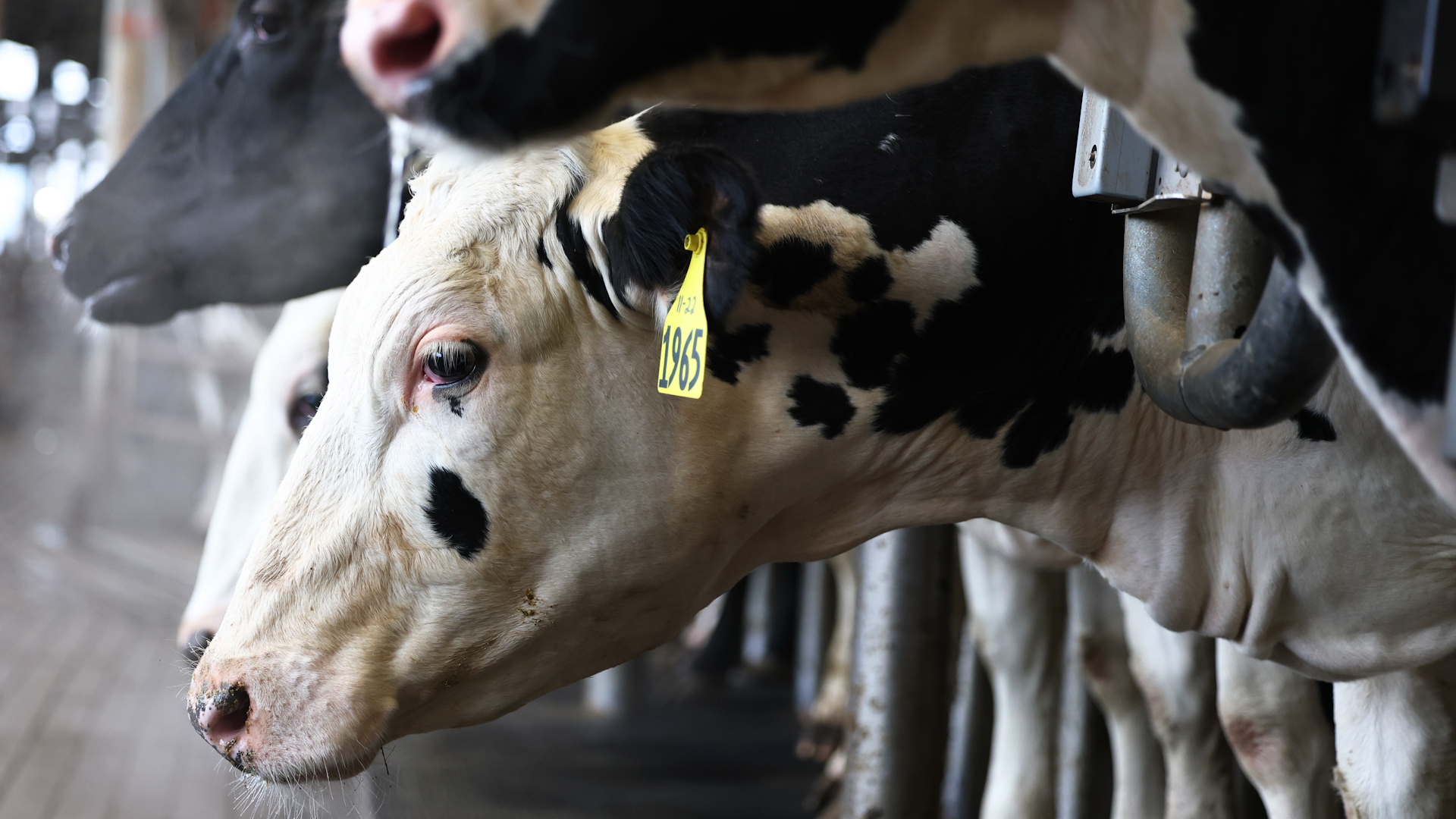
New bird flu variation found in US dairy cattle
By Craig Nigrelli (Anchor), Brock Koller (Senior Producer), Shea Taylor (Producer), Kaleb Gillespie (Video Editor)
For the first time, testers have discovered a second bird flu variation in American dairy cows. The Department of Agriculture announced the new strain on Wednesday, Feb. 5.
Media Landscape
See how news outlets across the political spectrum are covering this story. Learn moreBias Distribution
Left
Right
Untracked Bias
Until recently, all dairy herd detections in the U.S. had been infected with a form of bird flu known as B3.13.

Download the SAN app today to stay up-to-date with Unbiased. Straight Facts™.
Point phone camera here
Researchers previously detected this new version, D1.1, only in wild birds and poultry, but has now spread to cows.
They were able to link this strain to a deadly human case in Louisiana last year. The victim contracted the virus after exposure to infected birds.
Humans infected with D1.1 have experienced more severe symptoms than those with the previous bird flu strain. However, the CDC said the risk to the general public remains low, and there is no evidence of the spread of D1.1 from human to human.
[craig nigrelli]
testers have discovered A SECOND TYPE OF BIRD FLU IN AMERICAN DAIRY COWS FOR THE FIRST TIME.
THE DEPARTMENT OF AGRICULTURE ANNOUNCED THE NEW STRAIN — SAYING UNTIL RECENTLY – ALL DAIRY HERD DETECTIONS IN THE U-S HAD BEEN INFECTED WITH A FORM OF BIRD FLU KNOWN AS B3.13
THIS NEW VERSION — KNOWN AS D1.1 — HAS ONLY PREVIOUSLY BEEN DETECTED IN WILD BIRDS AND POULTRY, INDICATING IT has NOW SPREAD
TO COWS.
IT’S ALSO THE STRAIN THAT’S BEEN LINKED TO A DEADLY HUMAN CASE IN LOUISIANA LAST YEAR — AFTER THE VICTIM WAS EXPOSED TO INFECTED BIRDS.
HUMANS INFECTED BY D1.1 HAVE EXPERIENCED MORE SEVERE SYMPTOMS THAN THOSE WITH THE PREVIOUS BIRD FLU STRAIN.
HOWEVER, THE C-D-C SAYS THE RISK TO THE GENERAL PUBLIC REMAINS LOW — AND THERE’S NO EVIDENCE OF HUMAN-TO-HUMAN SPREAD OF D1.1
Media Landscape
See how news outlets across the political spectrum are covering this story. Learn moreBias Distribution
Left
Right
Untracked Bias
Straight to your inbox.
By entering your email, you agree to the Terms & Conditions and acknowledge the Privacy Policy.
MOST POPULAR
-
 Getty Images
Getty Images
Billions of cicadas emerge in 13 states this spring
Read8 hrs ago -
 Getty Images
Getty Images
Mark Carney to succeed Justin Trudeau as head of Canada’s Liberal Party
Read9 hrs ago -
 Getty Images
Getty Images
DHS sees leadership shakeup amid ICE operation leaks
Read9 hrs ago -
 Reuters
Reuters
Pope Francis health update: gradual improvement
ReadSaturday




